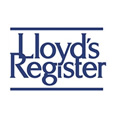The medical community is going mobile, as healthcare providers are embracing the next wave of mobile devices. A Jackson & Coker report has found that four out of five practicing physicians use their personal mobile devices in their daily medical procedures, from prescribing medicine to scheduling patient follow-ups and entering billing data.
“As mobile devices and applications have become more user-friendly, affordable and powerful, the appeal to businesses of all types, including healthcare providers, has grown exponentially,” said Tim Herbert, vice president of CompTIA Research.
According to CompTIA’s Third Annual Healthcare IT Insights and Opportunities study, physicians have cited several reasons for switching to mobile healthcare tools, including increased productivity, improved patient care, and a potential system for accessing, storing and protecting Electronic Health Records (EHR).
CompTIA Research indicates that overall adoption of EHR systems is increasing: 38 percent of healthcare facilities are already operating with an EHR system in place, and nearly one-third of physicians are currently using their smart phones or personal tablets to access patients’ electronic health records. An additional 20 percent is expected to access EHR from their mobile devices within the next year.
As this trend toward EHR systems increases, the ability to share large quantities of information (for example, on the Health Information Exchange) will require flexibility, quick retrieval times, and substantial data capacity. Enter this new wave of mobile devices, and the cloud network.
Overall, the healthcare industry has been wary of storing EHR on the cloud. In fact, only five percent of healthcare providers have said they use the technology in their daily operations, according to the study.
“Generally, the healthcare industry has been slow to embrace cloud computing. This is especially true among the smaller medical practices, which comprise the vast majority of physician offices in the U.S.,” Herbert said.
But despite the slow start, Herbert remains optimistic. Healthcare providers are finding it difficult to move their data from one backup system to the next, as the amount of data they output increases. High-res medical imagery, for example, takes up much more space than it has in the past, and has forced medical companies into a costly cycle of buying and rebuying their next data storage system for additional space.
A private cloud network in place would erase these concerns for a healthcare center. Doctors can access their information, such as high-res medical images and patient data, from any mobile device despite its hardware and storage capacity, at incredible speed. And, since the mobile device is separate from the facility’s power supply, the physician’s critical information will not be lost in the case of a disaster scenario. In other words, it’s an inexpensive, highly effective Continuous Data Protection (CDP) system for healthcare providers.
Despite the current lag in adopting cloud network solutions, doctors are clearly integrating mobile technologies into their daily practices, relying more and more on digital solutions for improved patient care. The future of healthcare has arrived.




















